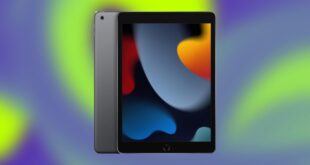Here’s a little mattress-testing secret: beds can be subjective. One of the biggest areas where we see subjectivity is firmness. It’s not hard to see why — we’re all different weights and heights and have different needs. So unless you have the exact same body as me, you might experience the same bed I’m describing a little differently.
Our CNET sleep team uses our years of experience testing and reviewing mattresses to recommend the best options for every type of person, whether it’s side sleepers, stomach sleepers or hot sleepers. Our team of nine mattress experts has tested around 300 beds and dozens of sleep accessories, so it’s safe to say that we know a lot about sleeping. That doesn’t change the fact that mattresses have inherent subjectivity.
That’s why our CNET Labs team built the Mattress Smasher 9000, a first-of-its-kind proprietary machine that delivers objective firmness scores. With this, nothing is left up to interpretation. We know exactly how firm a bed is and where it falls to other beds because we’ve got the data to back it up. The best part is that the Mattress Smasher 9000 is only at CNET.
How CNET tests mattresses
The CNET sleep team has been testing mattresses and sleep accessories for years. We’ve seen it all, from the evolution of Casper’s beds to beds made from funky materials like Airweave to flippable beds like Layla. At this point, we’ve collectively tested around 300 beds between our nine mattress testers.
Our team takes a holistic approach to mattress testing. We don’t just consider what a bed is made of or how it feels when we roll around on it (although we do both of those things); we take the time to consider who would enjoy the bed the most. We use our differences in weight, gender and sleeping needs to determine who we recommend each bed for.
Every bed that passes through our Reno warehouse undergoes extensive hands-on testing to assess metrics like temperature, motion isolation, durability and edge support. We also take our mattress testing a step further and have our team sleep on beds for an extended period to see how they stand up to regular use. This can range from a few months to multiple years.
That’s not enough for us. How could it be when we go to bed thinking about beds only to wake up and do it all again in the morning? That’s why our team has taken the next step in our mattress testing process by integrating the Mattress Smasher 9000. This device will help us pair our hands-on testing with objective numbers.
Meet the Mattress Smasher 9000
The Mattress Smasher 9000 is a proprietary testing machine made by our CNET Labs team. It might look simple enough, but a lot is happening with it and the accompanying software, which helps us collect objective firmness scores for every mattress in our facility. From an S-type load cell to electromagnets to a laser — yes, I said laser — this impressively orange machine took months to create.
Let me explain how it works: Using the linear actuator and laser range finder mounted on the crane, the MS9000 drops to press on the bed. The optical feedback sensor ensures we’re dropping exactly where we want to. The attached 8-inch plate does the actual smashing.
The 8-inch plate of the MS9000 presses onto the mattress to get the firmness score.
The linear actuator can produce 200 pounds of focus with only 9 inches of travel. Our calculations found that 40 pounds of force is the sweet spot for us because it’s equivalent to 165 pounds, or the average person’s weight. Don’t worry; we can adjust this number to allow us to measure and recommend beds for people outside of what is considered the “standard weight range.” For example, that number may change for the best mattresses for heavy people to ensure we get an accurate representation of who should buy those particular beds.
The in-house software uses a data acquisition module to control the actuator programmatically. This software also documents the real-time force and range measurements that come from the MS9000.
We’ve established a 1-through-10 firmness measurement scale, with 10 being the most firm. We run the MS9000 several times per bed to ensure our numbers are accurate before confirming the objective firmness score.
How we’ll use the Mattress Smasher 9000 to recommend beds for you
Over the last few months, we’ve been happily smashing beds to build out our data set of objective numbers to complement our personal experience. That’s how we know the extra-firm side of the Plank Firm Luxe comes in at 9.5 out of 10. So far, that’s the firmest mattress we’ve tested to date. It’s truly an ultrafirm-mattress lover’s dream.
The applications don’t just stop at overall firmness. The MS9000 arm can move, which allows us to measure different points across the surface of the bed. Most beds will be consistently firm across the surface, but for those with a zoned-support design, it will come in handy. Zoned support is becoming more and more common in the mattress space, especially as brands think about making beds for people with back pain. Zoned support simply means that the center third of the bed is firmer to support your back at night, while the head and foot will be softer.
Sometimes, zoned support is super subtle, so it can be hard to verify it’s actually there when we’re testing it. The MS9000 will allow us to objectively tell you if a bed actually has a difference in firmness and, if so, how much it is. As with cooling technology, we like to make sure that beds deliver what they say and aren’t just relying on marketing magic.
Will this replace our first-hand experience? Of course not. Nothing could beat Aly and Dillon’s 30 nights of bed testing series, Owen’s blind-testing mattress challenge, or top JD’s experience with the Purple mattresses — seriously, he’s tested all of them.
You can’t take the people out of mattress testing because objective numbers don’t make subjectivity vanish. Your weight and sleeping position will largely determine how you experience a bed.
For example, someone who weighs 125 pounds will put less pressure on a bed than someone who weighs 235 pounds. The more weight you put on a bed, the softer it will feel to you. I’m not talking about huge, sweeping changes to firmness, but it’s an important thing we always keep in mind when making recommendations. We need both the objective numbers and testing experience from the team to make our best mattress recommendations for you.
 synnbiob
synnbiob

